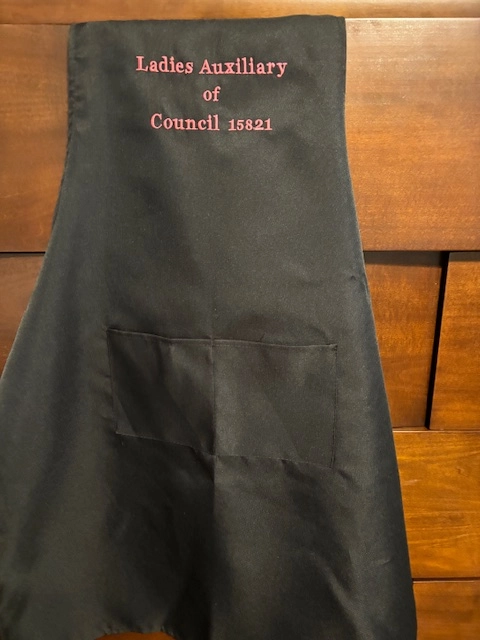Individualized Lab Coats with Embroidery for Medical Professionals
Individualized Lab Coats with Embroidery for Medical Professionals
Blog Article
The Art of Custom-made Needlework: Opening the Tricks to Creating Special and Remarkable Layouts
Needlework, a craft soaked in custom and creativity, holds within its complex stitches the power to change fabric right into a canvas of distinct expression. The tricks to developing personalized embroidery designs that captivate the eye and leave a lasting impression hinge on a fragile equilibrium of strategy, creative thinking, and focus to information. As we explore the world of custom-made embroidery, we uncover the nuanced interaction in between thread choice, stitch intricacy, and style customization that boosts a simple garment to a work of art. Join us on a trip via the art of custom-made embroidery as we unravel the enigmas behind crafting truly remarkable and unique developments.
Selecting the Right Needlework Threads
When choosing embroidery threads, what vital factors should you think about to make sure the finest results for your custom designs? The option of needlework string is essential in figuring out the final end result of your stitched design.
Thicker threads can include dimension and appearance to your design, while finer strings are ideal for intricate information and small message. Additionally, taking into consideration the color fastness and washability of the string is essential to make certain that your customized layouts preserve their quality and vibrancy over time.
Discovering Various Stitch Methods
To delve right into the world of 'Exploring Various Stitch Strategies', one should realize the complexities and subtleties that each sewing approach offers the art of needlework. Different stitch methods not just add visual passion but likewise add to the total structure and measurement of the design. One prominent stitch method is the satin stitch, which entails closely packed parallel stitches to develop a smooth and shiny surface area, ideal for completing forms and developing bold lays out.
On the other hand, the backstitch is a flexible method commonly used for outlining and including fine details. It includes sewing backwards to develop a solid line of embroidery. In addition, the French knot stitch adds a responsive element to styles, best for developing distinctive accents like blossom facilities or attractive touches.
Discovering various stitch strategies enables embroiderers to have fun with light, shadow, and depth within their styles, boosting the visual allure and imaginative top quality of their needlework jobs. By grasping different stitching techniques, one can open endless possibilities for developing unique and memorable custom embroidery items.
Incorporating Personalized Layout Aspects
Having discovered the complexities of different stitch methods such as the satin stitch, backstitch, and French knot, the focus currently shifts in the direction of incorporating tailored design components in customized needlework projects. Individualized design components play an important duty in making embroidery tasks really one-of-a-kind and memorable.
An additional way to integrate personalized style components is by including icons or motifs that hold special definition to the recipient or reflect their rate of interests and personality. Incorporating a favorite blossom, pet, or hobby-related symbol can make the embroidery style a lot more meaningful and tailored. Furthermore, choosing colors that reverberate with the recipient or straighten with the desired theme can even more improve the customization of the needlework project.
Grasping the Art of Color Control

One key element of shade control is understanding shade concept. This includes recognizing just how different shades interact with each other, the emotions they share, and how they can be integrated to develop visually enticing styles. By applying shade theory concepts, embroiderers can create unified shade palettes that enhance the general appearance of the layout.
Additionally, taking note of contrast is important in shade sychronisation. Utilizing contrasting shades can aid certain elements of the style pop, boost legibility, and develop an aesthetically dynamic embroidery piece. By mastering the art of shade coordination, embroiderers can raise their designs and develop memorable items my blog that resonate with clients and visitors alike.
Enhancing Structure With Advanced Needlework Stitches
French knots, as an example, are ideal for including tiny, raised dots to your layout, imitating the appearance of beads or developing a textured surface area. Bullion knots, on the other hand, can be used to develop twisted, ropelike elements that include an elegant feel to the embroidery. Seed sewing entails little, scattered stitches that can fill out locations with a polychromatic appearance, while turkey job produces fluffy, dimensional accents similar to animal fur or vegetation. Try out these advanced needlework stitches permits you to push the boundaries of standard needlework and develop genuinely special and visually appealing appearances in your styles.
Verdict
To conclude, the art of customized embroidery includes a combination of picking the ideal threads, discovering various stitch strategies, integrating personalized layout elements, understanding color control, and enhancing appearance with sophisticated stitches. By recognizing and executing these vital aspects, embroiderers can develop distinct and remarkable designs that display their creativity and ability. Needlework enthusiasts can open the keys to producing attractive and bespoke items that stand apart and leave a long lasting impression.
Report this page